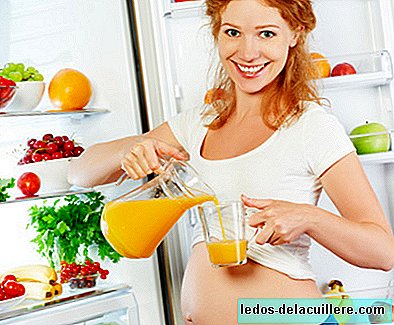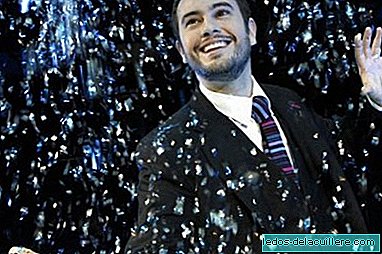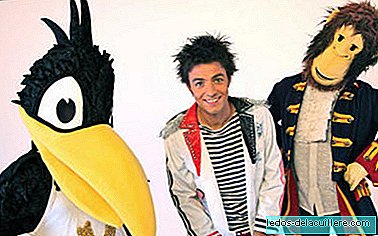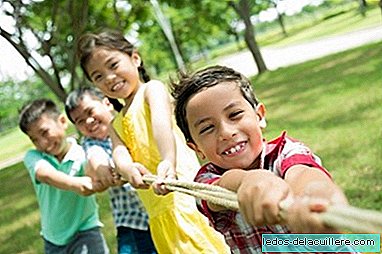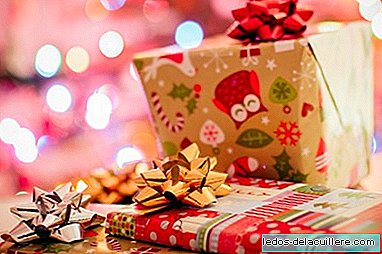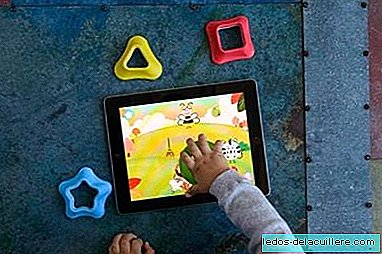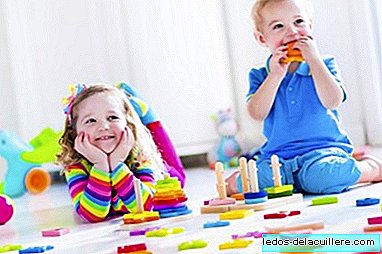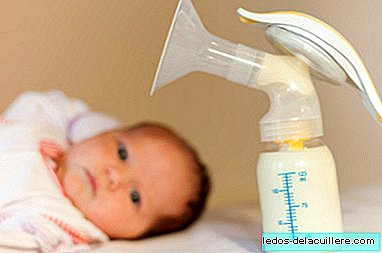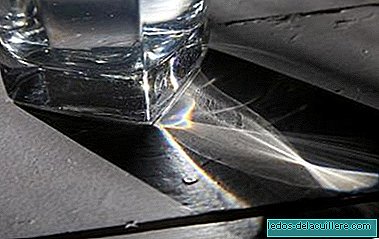
Children really enjoy the scientific experiments and, if they are not complicated, we can make them ourselves at home and make the preparation, realization and collection of hypotheses and conclusions an unforgettable moment. When I do scientific workshops with children, they have a wonderful time and you can certainly adapt them to your family too.
In addition, experiments are a playful way to bring children closer to Nature and its laws in a fun and creative way, letting them touch things with their hands and at the same time, making them participate in the scientific method, laying the foundations for a healthy relationship with the learning.
Today I propose a science workshop in which let's experiment with water. Children can help us after two or three years, but it will be with four or five when they can benefit more and understand some simple concepts.

Freshwater and salt water
We will need a liter of water, a transparent salad bowl, a tray of cubes, food coloring, salt and a fridge. We will discover that salt water is denser than sweet for the particles that have dissolved.
First we mix some tap water with dye and put it in the tray of cubes, putting it in the freezer.
When the ice cubes are made hard, we will take the liter of warm water and dissolve salt until it no longer dissolves. Then we will take out the colored cubes and put them in the salt water.
The cubes will become liquid but the water will melt, and the resulting colored water will float on the transparent salt water.
The conclusion will be logical, salt-free water has less density than salt and for that reason it is floating, it is lighter, and we can also explain phenomena such as fresh water is what remains on the surface of the land in the form of rivers and lakes.
The water that a balloon attracts
This experiment will astonish children although for the little ones some concepts are more complicated, we can translate them into a language they understand and you will be surprised how easily children accept that the subject is much more complex than what we can observe with the naked eye. Let's do that a balloon is able to attract a stream of tap water.
We will need a balloon, in addition to tiny pieces of paper. We will rub the balloon against our clothes and then we will bring the children's hair and the pieces of paper. The balloon attracts them and they even stick together.
Then, we vigorously rub the balloon again and bring it closer to a trickle of tap water.
The small trickle of water, as you approach the balloon, will stop falling vertically and it will deviate gently towards the globe, as if attracted to it with a mysterious and invisible force. Even if we get closer, a drop of water will stick to the surface. It seems magic but it is pure science.
Objects, everything around us, is made of invisible atoms and atoms, in turn, by small particles. One of them is the tiny electrons, which float around the nucleus. When we rub the globe some electrons remain attached to the globe, attracting with their force the objects of opposite charge, as if they were small magnets. For the little ones, this explanation is enough and it is much clearer if we complement it with a set of magnets. Later we can expand the explanations.
Rainbow in a glass
Watch the Rainbow in the sky is a wonderful experience. The ancients imagined beautiful legends about that bridge of colors that seems to come from the realm of magic or the gods. But it is a natural phenomenon and as such, we can try to bring their real nature to children by getting may a glass help us see a small rainbow.
We will need a glass full of water and a table lamp that leaves the bulb in the air so that its light is more intense.
Once the glass of water is full we will encourage the children to look through the light of the bulb. At first, we will approach it parallel to your view but then we can tilt the glass until we can see a soft rainbow in it.
The reason is that water is not a uniform matter and by passing water through it it deflects the rays of different colors that form it, separating them and making them visible. The visible white light is the mixture of the rays of different wavelengths combined and the water helps us to separate them until we can distinguish them, exactly as the droplets of the rainwater do with the sun's rays in the Rainbow.
I hope the little ones in the house enjoy these water experiments from our science workshop. I think they will love it, but I don't assure they don't end up soaked.


